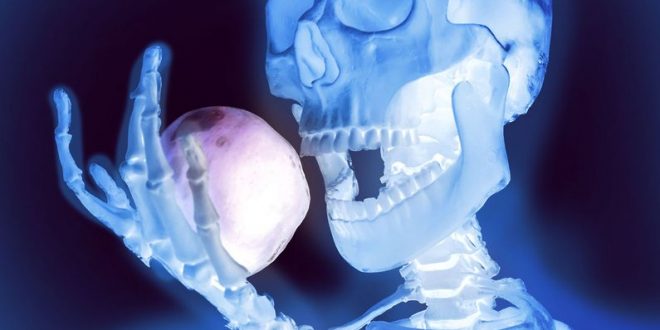We tend to think of our bones as just scaffolding, holding up our droopy flesh and preventing it from flopping into a slimy, messy blob on the floor. But our bones, and more specifically the cells that produce them, play a far more active role in our bodies than we generally consider.
In a new research, scientists have finally figured out more about how our bones affect how we metabolize both sugar and fat.
In a recent paper in The Journal of Clinical Investigation, Ferron’s team unveiled a new piece of the puzzle that explains how osteocalcin works. The discovery may someday open the door to new ways of preventing type 2 diabetes and obesity.
Bone: An endocrine organ
It has long been known that hormones can affect bones. “Just think about how women are more prone to suffer from osteoporosis when they reach menopause because their estrogen levels drop,” said Ferron, director of the IRCM’s Integrative and Molecular Physiology Research Unit.
But the idea that bone itself can affect other tissues took root only a few years ago with the discovery of osteocalcin. Thanks to this hormone, produced by bone cells, sugar is metabolized more easily.
“One of osteocalcin’s functions is to increase insulin production, which in turn reduces blood glucose levels,” Ferron explained. “It can also protect us from obesity by increasing energy expenditure.”
Studies have shown that, for some people, changes in blood concentrations of osteocalcin may even stave off the development of diabetes. These protective properties sparked Ferron’s interest in how this hormone actually works.
Hormone scissors
Osteocalcin is produced by osteoblasts, the same cells responsible for making our bones. The hormone builds up in bone, and then, through a series of chemical reactions, is released into the blood. The IRCM team is focusing on this key step.
“When it is first produced in osteoblasts, osteocalcin is in an inactive form,” Ferron noted. “What interested us was understanding how osteocalcin becomes active so as to be able to play its role when released into the blood.”
The IRCM lab demonstrated that an enzyme, which acts like molecular scissors, is required. Inactive osteocalcin has one more piece than active osteocalcin. The researchers examined in mice the different enzymes present in cells where osteocalcin was produced that could be responsible for snipping off the piece in question.
Ferron’s team succeeded in identifying it: it’s called furin. Furin causes osteocalcin to become active and the hormone is then released into the blood.
“We demonstrated that when there was no furin in bone cells, inactive osteocalcin built up and was still released, but this led to an increase in blood glucose levels and a reduction in energy expenditure and insulin production,” Ferron said.
Deleting these “scissors” also had an unexpected effect: it reduced the mice’s appetite. “We’re confident that the absence of furin was the cause,” Ferron said.
Indeed, his team demonstrated that osteocalcin itself has no effect on appetite. “Our results suggest the existence of a new bone hormone that controls food intake,” Ferron said.
“In future work, we hope to determine whether furin interacts with another protein involved in appetite regulation.”
Agencies/Canadajournal
 Canada Journal – News of the World Articles and videos to bring you the biggest Canadian news stories from across the country every day
Canada Journal – News of the World Articles and videos to bring you the biggest Canadian news stories from across the country every day



